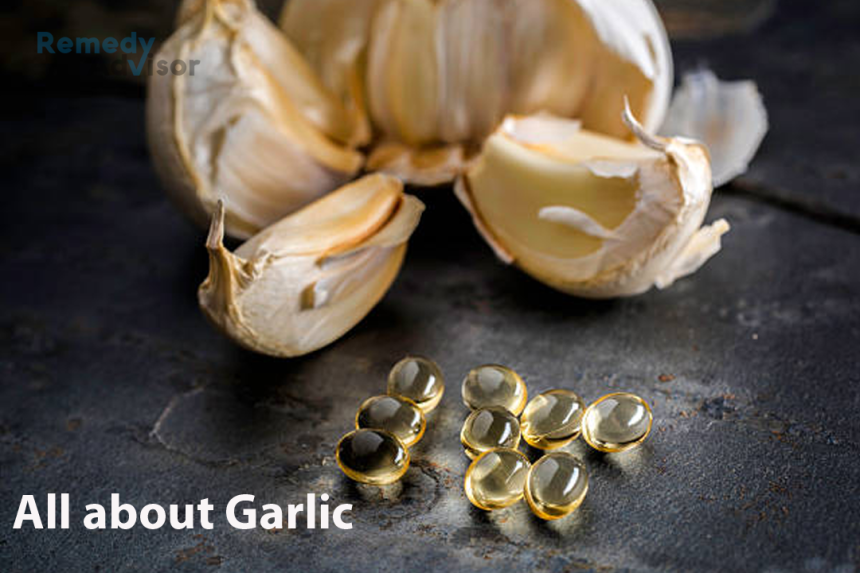Even if you don’t love the smell or taste of garlic, you’ll have to love the research that shows how garlic can help lower blood pressure, even in people whose hypertension is uncontrolled. But don’t worry: you don’t need to make garlic a part of every meal to enjoy the blood pressure-lowering abilities of this herb, although feel free to enjoy it as much as you want.
Garlic (Allium sativum) has been valued both as a food and for its medicinal abilities since the time of the pharaohs. During World I and World War II, garlic was used to help prevent gangrene in injured soldiers. Aside from its reputation for warding off vampires, today garlic is used to help lower blood pressure and cholesterol levels, prevent or reduce symptoms of the common cold, and improve blood flow. Some research indicates it may also assist in the fight against certain cancers.
What’s Special about Garlic?
Garlic is grown around the globe and is a rich source of antioxidants, which fight cell-damaging molecules. A number of plant chemicals in garlic are believed to be responsible for its health benefits, including the sulfur compounds allicin, alliin, and ajoene and polysulfides.
Without getting too technical, researchers have found that allicin (which is made from alliin in garlic) has the ability to block the activity of a protein called angiotensin {I, which has a role in making blood vessels contract. Allicin can help prevent blood vessels from abnormal contractions and thus help prevent a rise in blood pressure.
Garlic also contains sulfur-containing molecules called polysulfides. When these polysulfides enter red blood cells, they can be transformed into a gas called hydrogen sulfide, which helps control blood pressure.
Other added bonuses from garlic are its ability to help prevent cardiovascular problems, which go hand in hand with hypertension. Garlic contains anti-inflammatory compounds, such as 1, 2-vinyldithiin and thiacremonone, which appear to inhibit the actions of molecules that cause inflammation, a risk factor for cardiovascular disease.
In a 2013 Australian study, seventy-nine people with uncontrolled systolic hypertension were enrolled in a double-blind, placebo-controlled study that involved taking placebo or 240, 480, or 960 milligrams daily of an aged garlic extract. The treatment period lasted twelve weeks. By the end of the trial, the average systolic blood pressure had declined significantly (mean of 11.8mmHg) in participants who had taken 480 milligrams garlic extract. Individuals who took 960 milligrams reached a significant decline in systolic blood pressure by week 8 (7.4mmHg decline) of the study. People in the 240-milligrams and control groups did not experience a significant decline in blood pressure.
Other studies have had similar results. In a Japanese study from 2013, people with prehypertension and mild hypertension were given 300 milligrams of a Japanese garlic product daily for twelve weeks. The garlic was associated with a significant reduction in systolic blood pressure (between 6.6 and 7.5mmHg) and diastolic blood pressure (between 4.6 and 5.2 mmHg) when com- pared with placebo.
How to Use Garlic
Garlic can be enjoyed either raw or cooked and added to a wide variety of foods, depending on your taste preferences. If garlic is not one of your favorite herbs or if you want to get the benefits of garlic supplements, they are available made from fresh, dried, or freeze-dried garlic and as capsules, tablets, gel caps, and aged garlic ex- tracts. Many garlic supplements are now available in forms that do not leave you smelling like a loaf of garlic bread as well! However, the aging process necessary to make garlic nearly odorless also can make garlic less effective. Therefore, look for supplements that are enteric coated so they will dissolve in the intestinal tract rather than in the stomach.
Garlic Hints
- Boost the benefits of fresh garlic by allowing your garlic to “breathe” after you chop or mince it. If you are going to enjoy garlic raw, then you can add it to your food immediately. However, if you plan to cook the garlic, allowing it to sit for about five to ten minutes gives the alliinase enzymes time to do their “work” and boost the health advantages of garlic.
- If you heat or cook with garlic, remember that too much heat for too long will reduce the herb’s health benefits. Tossing minced garlic into hot oil is a sure way to banish the benefits. Try to keep the cooking temperature around 250 degrees F or lower. That means the suggested temperature of 350 degrees F to roast garlic will leave you with nutrient-deficient bulbs.
When buying garlic supplements, look for those containing standardized alliin or allicin. Not all garlic contains the same amount of active ingredients. Some typical doses of garlic and garlic supplements include the following. However, always defer to the doses recommended by your health-care provider:
- Fresh garlic: 2—4 grams daily. Each clove (not bulb!) is about 1 gram.
- Garlic tablets, freeze-dried: 400 mg three times daily of standardized 1.3 percent alliin or 0.6 percent allicin. You may also see alliin and allicin given in microgram amounts, such as 26,400 mcg alliin and 12,000 mcg allicin.
- Aged garlic extract: 600 mg-1,200 mg daily in divided doses
- Fluid extract (1:1 weight/volume): 4 milliliters daily
Garlic can interact with certain medications, so be- ware. Birth control pills, for example, may be less effective in women who use garlic. Anyone who is taking blood thinners such as warfarin, aspirin, and clopidogrel or who is using non-steroidal anti-inflammatory drugs (NSAIDs) such as ibuprofen and naproxen should talk to their doctor before starting garlic, because the herb can increase the risk of bleeding.







